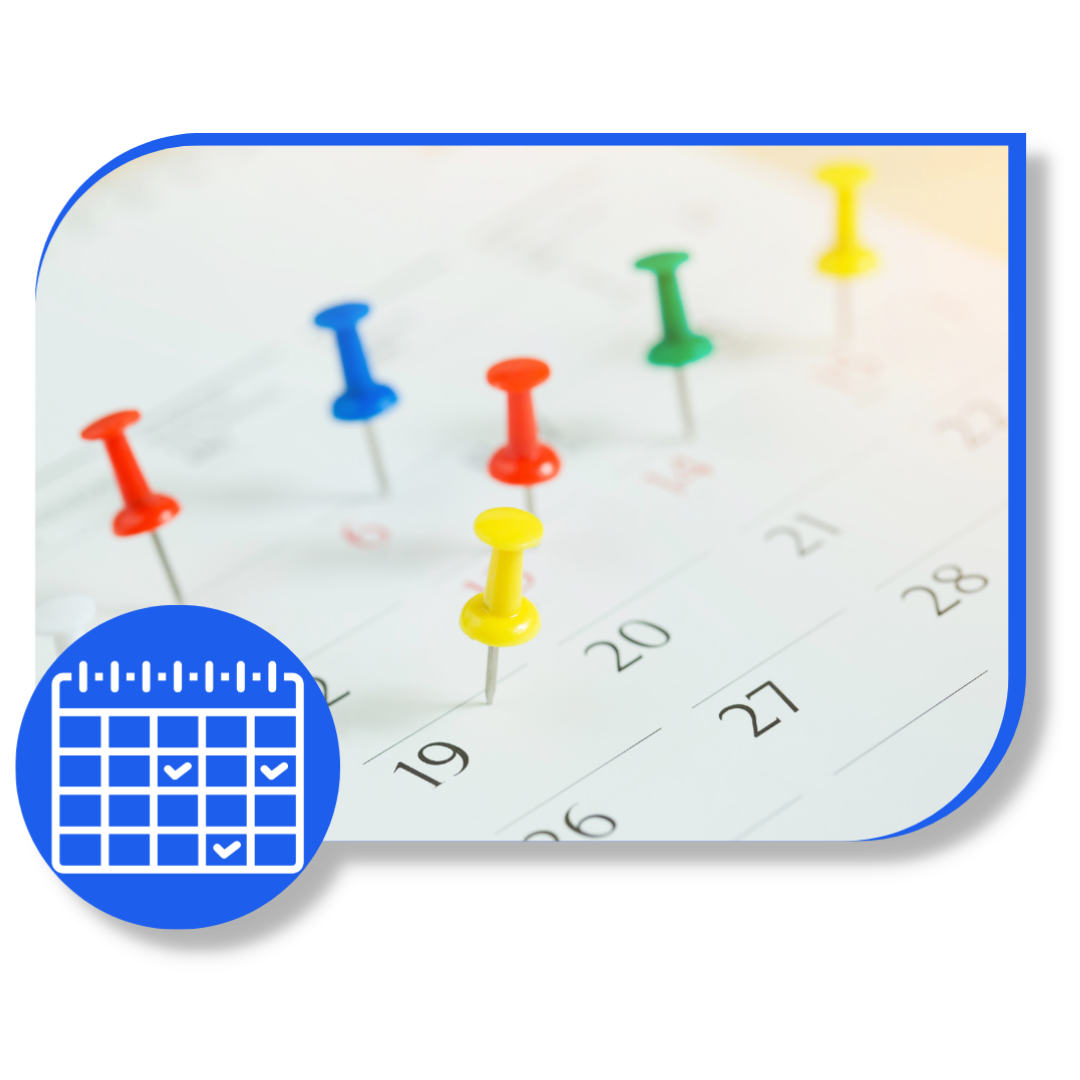Your Business. Powered by AI.
24/7 Lead Generation + 24/7 Lead Handling.
We dominate local search to bring you leads. AI Employees answer every call, book every appointment, respond instantly. You just close deals.


Vancouver Businesses Are Bleeding Money
Every day, local businesses lose customers to:
❌ Missed calls (40% go unanswered)
❌ Slow response times (leads go cold in 5 minutes)
❌ No after-hours coverage (emergencies don't wait)
❌ Invisible online (competitors dominate search)
❌ Missing from AI answers (ChatGPT, Perplexity don't know you exist)
Your competitors are solving these problems.
Are you?
Two Services. Total Domination.
🎯 LOCAL DOMINATION - We make you impossible to ignore. SEO, AEO, GEO, and Chat Engine Optimization. Result: Leads flow in 24/7.
🤖 AI EMPLOYEES - Never miss another opportunity. AI Receptionist, AI Appointment Setter, AI Chat Agent. Result: Every lead gets handled.
Local Domination brings the leads. AI Employees convert them. You grow without hiring.


From Invisible to Unstoppable in 30 Days
Step 1: AUDIT - We analyze your online presence, competitors, and missed opportunities.
Step 2: DOMINATE - We optimize your presence across Google, AI engines, and local search.
Step 3: AUTOMATE - AI Employees answer every call, qualify every lead, book every appointment.
Step 4: SCALE - More visibility. More leads. More bookings. Less stress. Grow without adding payroll.
Omnichannel
Major CXM helps you start, converse, and book more appointments on autopilot for your business through SMS, Email, Live Chat, Phone Calls, and much more!

Built for Vancouver Service Businesses
🦷 Dental Clinics
🏥 Medical Practices
💇 Salons & Beauty
🔧 HVAC Companies
🔨 Contractors
🚿 Plumbers
We understand the unique challenges of service businesses in Greater Vancouver.

Real Results from Real Vancouver Businesses

Mastering Cold Calls in 2023: A Comprehensive Guide for Success
Cold calling is often perceived as a daunting task for sales professionals. However, with the right strategies and mindset, it can actually become a powerful sales tool. In this article, we'll explore effective cold calling techniques, debunk some common myths, and provide actionable tips to help you achieve cold calling success.
Understanding Cold Calling
Cold calling, a term frequently used in the sales industry, refers to the practice of reaching out to potential customers who have not previously expressed an interest in your products or services. It's a proactive sales outreach method that can be highly effective when executed correctly.
The most common misconception about cold calling is that it's a mere numbers game, where success is achieved by making a vast number of calls hoping to strike gold. However, successful cold calling in the modern era requires a more targeted, strategic approach.
Why Cold Calling is Still Relevant
Despite the rise of various digital marketing strategies, cold calling remains a fundamental part of sales operations. It's an effective way to generate sales and establish relationships with potential customers. Research indicates that 82% of buyers are willing to schedule meetings with sales reps who proactively reach out to them, and cold calling is a primary method for such outreach.
In fact, cold calling can lead to substantial growth for businesses. Organizations that incorporate cold calling experienced 42% more growth than those who didn't. While it's not a one-size-fits-all solution, cold calling can be a powerful tool when used appropriately.
Defining Your Prospects
The first step in successful cold calling is defining your prospects. A prospect is someone who has a problem that your product or service can solve and, most importantly, has the desire to solve that problem. If they don't already want to solve it, you're wasting your time trying to convince them.
You should aim to contact prospects who are most likely to need and benefit from your solution. This requires thorough research and understanding of your target audience. Sales reps should focus their efforts on high-quality prospects to increase the likelihood of successful conversion.
Conducting Pre-call Research
Before making a cold call, it's crucial to gather as much information about your prospect as possible. This includes understanding their industry, their role within the company, the challenges they face, and potential solutions they might be interested in.
Researching your prospects not only improves the effectiveness of your cold calls but also helps you personalize your approach. Personalization can significantly increase the success rate of your cold calls, as it makes the prospect feel valued and understood.
Crafting a Solid Cold Calling Script
A well-structured cold calling script can serve as a valuable guide during your calls. It provides a clear roadmap for the conversation, ensuring that you cover all necessary points and handle potential objections effectively.
However, a script should not be read verbatim. It should serve as a reference point, allowing for natural conversation and adaptability based on the prospect's responses. Over time, you can refine your script based on what works best during your calls.
Choosing the Right Time to Call
Timing is a crucial factor in cold calling. You want to reach out to your prospects at a time when they're most likely to be available and receptive. Research suggests that the best days to make cold calls are Wednesdays and Thursdays, while the most effective time is between 4:00 PM and 5:00 PM in the prospect's local time.
However, these are general guidelines and may not apply to every situation. Therefore, it's important to track your own call records to identify the days and times that yield the best results for your specific audience.
Handling Objections and Rejections
Objections and rejections are part and parcel of cold calling. It's essential to learn how to handle them effectively and not let them discourage you.
When faced with a rejection, view it as a learning opportunity. Ask the prospect why they're not interested and use their feedback to improve your approach. When dealing with objections, it's important to have prepared responses to common concerns. This will allow you to address the prospect's doubts and keep the conversation moving forward.
Creating a Dialogue, Not a Monologue
Successful cold calling involves creating a dialogue with your prospect, not delivering a monologue. You should aim to engage the prospect in a two-way conversation, asking open-ended questions to understand their needs and concerns.
Remember, the purpose of cold calling is not to sell your product or service directly but to establish a relationship with the prospect and determine whether they could benefit from your solution.
Leaving an Effective Voicemail
In many cases, your cold calls may go unanswered, and you'll be left with the option to leave a voicemail. A well-crafted voicemail can increase the chance of a callback, so it's important to make the most of this opportunity.
Keep your voicemail short and to the point, clearly stating your name, company, reason for calling, and contact information. Make sure to convey a compelling reason for the prospect to return your call.
Embracing Persistence and Automation
Persistence is key in cold calling. It's rare to achieve success on the first call, so don't be discouraged if you don't get immediate results. Follow up with your prospects regularly, but ensure you're not overwhelming them with too many calls or messages.
Automation tools can help streamline your cold calling process. This includes scheduling follow-ups, dialing numbers, updating databases, and sending messages. Using a Customer Relationship Management (CRM) tool can help you manage your cold calling activities more efficiently.
Conclusion
Cold calling is a powerful sales tool when done correctly. By defining your prospects, conducting thorough pre-call research, crafting a solid script, choosing the right time to call, handling objections, creating a dialogue, leaving effective voicemails, and embracing persistence and automation, you can turn cold calling into a valuable asset for your company.
Despite its challenges, cold calling remains a vital part of many sales strategies. With patience, persistence, and the right approach, you can master the art of cold calling and significantly boost your sales performance.

Mastering Cold Calls in 2023: A Comprehensive Guide for Success
Cold calling is often perceived as a daunting task for sales professionals. However, with the right strategies and mindset, it can actually become a powerful sales tool. In this article, we'll explore effective cold calling techniques, debunk some common myths, and provide actionable tips to help you achieve cold calling success.
Understanding Cold Calling
Cold calling, a term frequently used in the sales industry, refers to the practice of reaching out to potential customers who have not previously expressed an interest in your products or services. It's a proactive sales outreach method that can be highly effective when executed correctly.
The most common misconception about cold calling is that it's a mere numbers game, where success is achieved by making a vast number of calls hoping to strike gold. However, successful cold calling in the modern era requires a more targeted, strategic approach.
Why Cold Calling is Still Relevant
Despite the rise of various digital marketing strategies, cold calling remains a fundamental part of sales operations. It's an effective way to generate sales and establish relationships with potential customers. Research indicates that 82% of buyers are willing to schedule meetings with sales reps who proactively reach out to them, and cold calling is a primary method for such outreach.
In fact, cold calling can lead to substantial growth for businesses. Organizations that incorporate cold calling experienced 42% more growth than those who didn't. While it's not a one-size-fits-all solution, cold calling can be a powerful tool when used appropriately.
Defining Your Prospects
The first step in successful cold calling is defining your prospects. A prospect is someone who has a problem that your product or service can solve and, most importantly, has the desire to solve that problem. If they don't already want to solve it, you're wasting your time trying to convince them.
You should aim to contact prospects who are most likely to need and benefit from your solution. This requires thorough research and understanding of your target audience. Sales reps should focus their efforts on high-quality prospects to increase the likelihood of successful conversion.
Conducting Pre-call Research
Before making a cold call, it's crucial to gather as much information about your prospect as possible. This includes understanding their industry, their role within the company, the challenges they face, and potential solutions they might be interested in.
Researching your prospects not only improves the effectiveness of your cold calls but also helps you personalize your approach. Personalization can significantly increase the success rate of your cold calls, as it makes the prospect feel valued and understood.
Crafting a Solid Cold Calling Script
A well-structured cold calling script can serve as a valuable guide during your calls. It provides a clear roadmap for the conversation, ensuring that you cover all necessary points and handle potential objections effectively.
However, a script should not be read verbatim. It should serve as a reference point, allowing for natural conversation and adaptability based on the prospect's responses. Over time, you can refine your script based on what works best during your calls.
Choosing the Right Time to Call
Timing is a crucial factor in cold calling. You want to reach out to your prospects at a time when they're most likely to be available and receptive. Research suggests that the best days to make cold calls are Wednesdays and Thursdays, while the most effective time is between 4:00 PM and 5:00 PM in the prospect's local time.
However, these are general guidelines and may not apply to every situation. Therefore, it's important to track your own call records to identify the days and times that yield the best results for your specific audience.
Handling Objections and Rejections
Objections and rejections are part and parcel of cold calling. It's essential to learn how to handle them effectively and not let them discourage you.
When faced with a rejection, view it as a learning opportunity. Ask the prospect why they're not interested and use their feedback to improve your approach. When dealing with objections, it's important to have prepared responses to common concerns. This will allow you to address the prospect's doubts and keep the conversation moving forward.
Creating a Dialogue, Not a Monologue
Successful cold calling involves creating a dialogue with your prospect, not delivering a monologue. You should aim to engage the prospect in a two-way conversation, asking open-ended questions to understand their needs and concerns.
Remember, the purpose of cold calling is not to sell your product or service directly but to establish a relationship with the prospect and determine whether they could benefit from your solution.
Leaving an Effective Voicemail
In many cases, your cold calls may go unanswered, and you'll be left with the option to leave a voicemail. A well-crafted voicemail can increase the chance of a callback, so it's important to make the most of this opportunity.
Keep your voicemail short and to the point, clearly stating your name, company, reason for calling, and contact information. Make sure to convey a compelling reason for the prospect to return your call.
Embracing Persistence and Automation
Persistence is key in cold calling. It's rare to achieve success on the first call, so don't be discouraged if you don't get immediate results. Follow up with your prospects regularly, but ensure you're not overwhelming them with too many calls or messages.
Automation tools can help streamline your cold calling process. This includes scheduling follow-ups, dialing numbers, updating databases, and sending messages. Using a Customer Relationship Management (CRM) tool can help you manage your cold calling activities more efficiently.
Conclusion
Cold calling is a powerful sales tool when done correctly. By defining your prospects, conducting thorough pre-call research, crafting a solid script, choosing the right time to call, handling objections, creating a dialogue, leaving effective voicemails, and embracing persistence and automation, you can turn cold calling into a valuable asset for your company.
Despite its challenges, cold calling remains a vital part of many sales strategies. With patience, persistence, and the right approach, you can master the art of cold calling and significantly boost your sales performance.

Ready to Dominate Your Market?
Book a free strategy call. We'll show you exactly where you're losing leads and how to fix it.
Or call us: (604) 999-9892
Email: bill@majorcxm.com
📍 Serving Greater Vancouver: Vancouver, Burnaby, Surrey, Richmond, North Vancouver, Coquitlam, and beyond.


